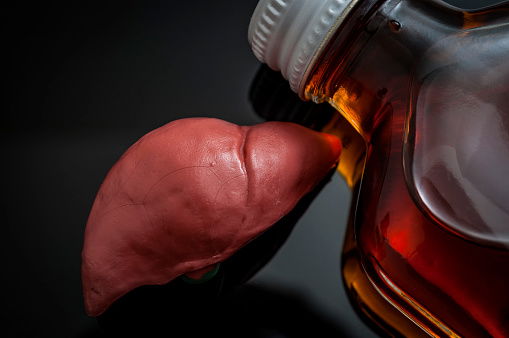Alcoholic Liver Disease

There are three types of alcoholic liver disease: fatty liver, alcoholic hepatitis, and cirrhosis. Early symptoms are mild hepatomegaly that often resolves after abstinence. Liver enzymes such as ALT and AST are usually mildly elevated and the International Normalized Ratio (INR) is normal. Ultrasound or magnetic resonance imaging may be used to diagnose hepatic steatosis. Liver biopsy is not necessary routinely. Click here and learn how to prevent these liver disorders at no cost.
Patients with alcoholic cirrhosis should have upper gastrointestinal endoscopy performed annually to rule out varices. Patients with this condition are also at a higher risk for HCC. Other risk factors include cigarette smoking and obesity. Ultrasound examinations with a-fetoprotein testing should be performed every six months and patients should be vaccinated against hepatitis A and B. If hepatitis is suspected, a liver biopsy may be necessary.
Patients should inform their GP if they regularly consume alcohol. In many cases, patients must cease alcohol consumption before undergoing liver transplant surgery. This restriction may not be enough, however, since alcohol misuse can lead to permanent liver damage. Depending on the type of alcohol abuse, the patient may suffer from one of three stages of ARLD. As a result, the patient may experience a relapse of alcohol abuse.
A relapse can occur as early as six months after surgery.
In addition to alcohol, heavy drinking has a number of other harmful effects to the body. Alcohol damages the cardiovascular system and the kidneys, while the gastrointestinal system, nervous system, and hematological system are also effected. Consuming alcohol increases the risk of developing chronic kidney disease. Aside from the liver, a person's lifestyle may affect their risk of developing cirrhosis. In addition to alcohol abuse, alcohol consumption can damage the brain and the gastrointestinal system.
Among the different types of alcoholic liver disease, the mildest form is hepatitis, which is reversible with proper medical management. ALD is a significant burden for the economy and is caused by heavy alcohol use. Therefore, innovative and promising pharmacological approaches to treat alcoholic liver disease are needed. In addition, early liver transplant is effective in highly selected patients. So, if you want to extend your life, stop drinking alcohol.
Alcohol is also thought to increase the inflammatory response of hepatocytes, get additional reading about these effects on this site. Inflammation induced by alcohol can result in apoptosis, which is a hallmark of ALD. This process involves the activation of caspase-dependent and caspase-independent apoptotic pathways. The upregulation of M2-related genes in the liver promotes inflammatory responses and results in apoptosis.
Although alcoholism and cirrhosis are often associated, they are not synonymous. In fact, only 10% to 20% of chronic heavy drinkers will develop clinically significant forms of ALD. Alcohol is responsible for half of all deaths from cirrhosis in the United States. In 2014, the mortality rate from cirrhosis caused by alcoholic liver disease was 12.0 per 100,000 people; however, cirrhosis-related deaths increased by 1.8% and 3.4% respectively.
An alternative post for more info on the topic here: https://en.wikipedia.org/wiki/Alcoholic_hepatitis.
